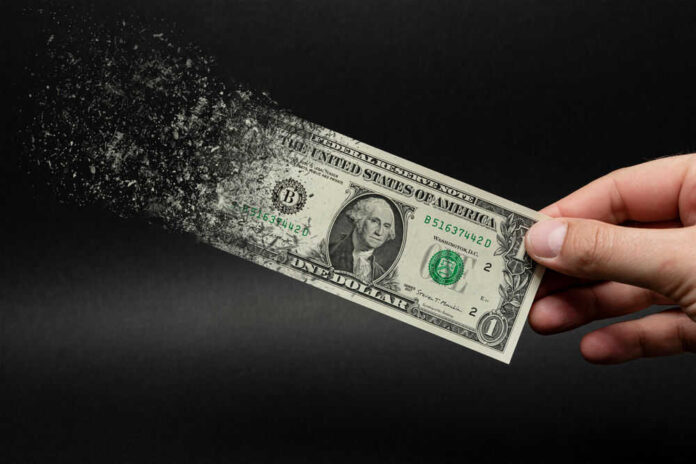
Nearly three in ten Americans cannot afford a $400 emergency expense, exposing a troubling financial vulnerability that persists despite falling inflation and the end of leftist economic policies.
Story Snapshot
- 29% of Americans lack the savings to cover an unexpected $400 expense, with financial insecurity highest among young and low-income households.
- Inflation cooled in 2025, but rising living costs and stagnant wage growth continue to erode household resilience.
- Reliance on high-interest credit and borrowing remains elevated, fueling record consumer debt.
- Persistent savings shortfalls raise questions about past fiscal policy failures and the effectiveness of new measures.
Widespread Financial Insecurity Persists Despite Economic Recovery
Recent national surveys reveal that 29% of Americans are unable to afford an unexpected $400 expense, underscoring a deep disconnect between official economic indicators and the realities faced by millions of households.
While unemployment remains low and inflation has retreated from its peak, the ability to handle even modest financial shocks is still out of reach for a substantial portion of the population.
Younger adults and lower-income groups are particularly at risk, indicating that economic headwinds continue to affect those already vulnerable disproportionately.
1 in 3 Americans have no emergency savings: Surveyhttps://t.co/sTUpq4K2Ft
— The Hill (@thehill) September 21, 2025
Generational and regional disparities further complicate the emergency savings crisis. The latest Bankrate survey shows 34% of Gen Z adults and 28% of Millennials have no emergency savings, compared to 16% of Baby Boomers.
Households in the South and Midwest experience higher rates of financial stress. Despite the end of aggressive government spending and a shift away from progressive economic agendas, the lingering effects of years of inflation and wage stagnation have not been fully offset, leaving many Americans no better prepared for unexpected costs.
Record Debt and Shrinking Safety Nets Challenge Household Stability
As inflation cooled to 2.9%, many expected relief for consumer budgets. However, the cost of living for essentials—housing, food, healthcare—has remained stubbornly high, with “shrinkflation” eroding the value of everyday purchases. Concurrently, Americans now owe a record $1.14 trillion in credit card debt, with average interest rates approaching 24%.
This reliance on high-interest borrowing exposes families to even greater risk, especially as emergency savings remain stagnant. The situation highlights the lasting damage of past fiscal mismanagement and raises concerns about the adequacy of current policy responses.
Despite new proposals from policymakers aimed at tackling inflation and improving household resilience, skepticism abounds regarding their potential effectiveness.
The shift in administration has brought a renewed focus on promoting individual responsibility and reducing government overreach, but emergency savings rates have shown little improvement.
Financial institutions and advocacy groups warn that without meaningful structural changes—such as strengthening wage growth and lowering everyday costs—households will continue to face acute financial stress and reduced mobility.
Expert Warnings and Calls for Reform Echo Across the Political Divide
Industry experts and economists caution that persistent inflation, even at lower rates, combined with high consumer debt, threatens the stability of American households.
Mark Hamrick of Bankrate characterizes the nation as “essentially a paycheck-to-paycheck nation,” noting that fewer Americans possess a financial safety net despite positive macroeconomic trends.
Greg McBride, also of Bankrate, stresses that building emergency savings is a long-term process, especially for younger adults burdened by rising costs.
Academic voices echo these concerns, warning that unless wage growth outpaces inflation and credit dependence declines, the risk of default and the demand for social safety nets will only increase.
Debate continues regarding the best path forward. Some analysts see expanded social programs and targeted interventions as necessary to address systemic vulnerabilities, while others argue for policies that reinforce conservative values—individual liberty, fiscal responsibility, and support for family and community.
The ongoing crisis in emergency savings serves as a stark reminder of the consequences of previous economic mismanagement and the urgent need for reforms that empower Americans to build genuine financial security.
Sources:
Saving money for emergency expenses remains out of reach for nearly 3 in 10 Americans
Bankrate Emergency Savings Report (2025)
Safety net: Emergency savings research
Unexpected Expenses Data Visualization – Federal Reserve
How vulnerable are Americans to unexpected expenses?
1 in 3 Americans have no emergency savings: Survey
Over 1 in 5 Americans have no emergency savings: Survey















